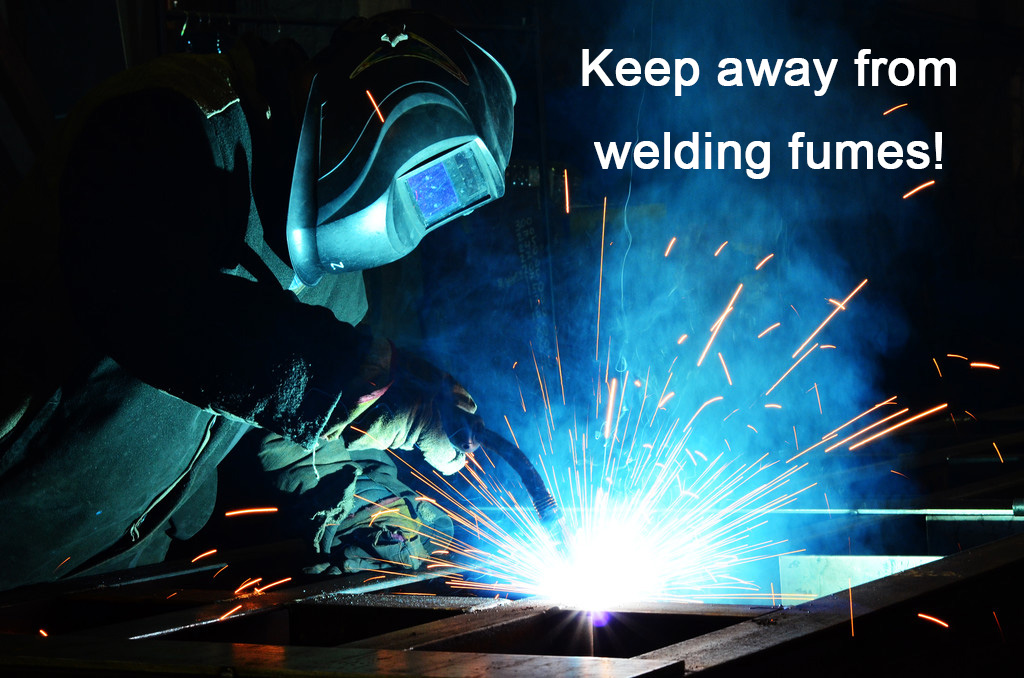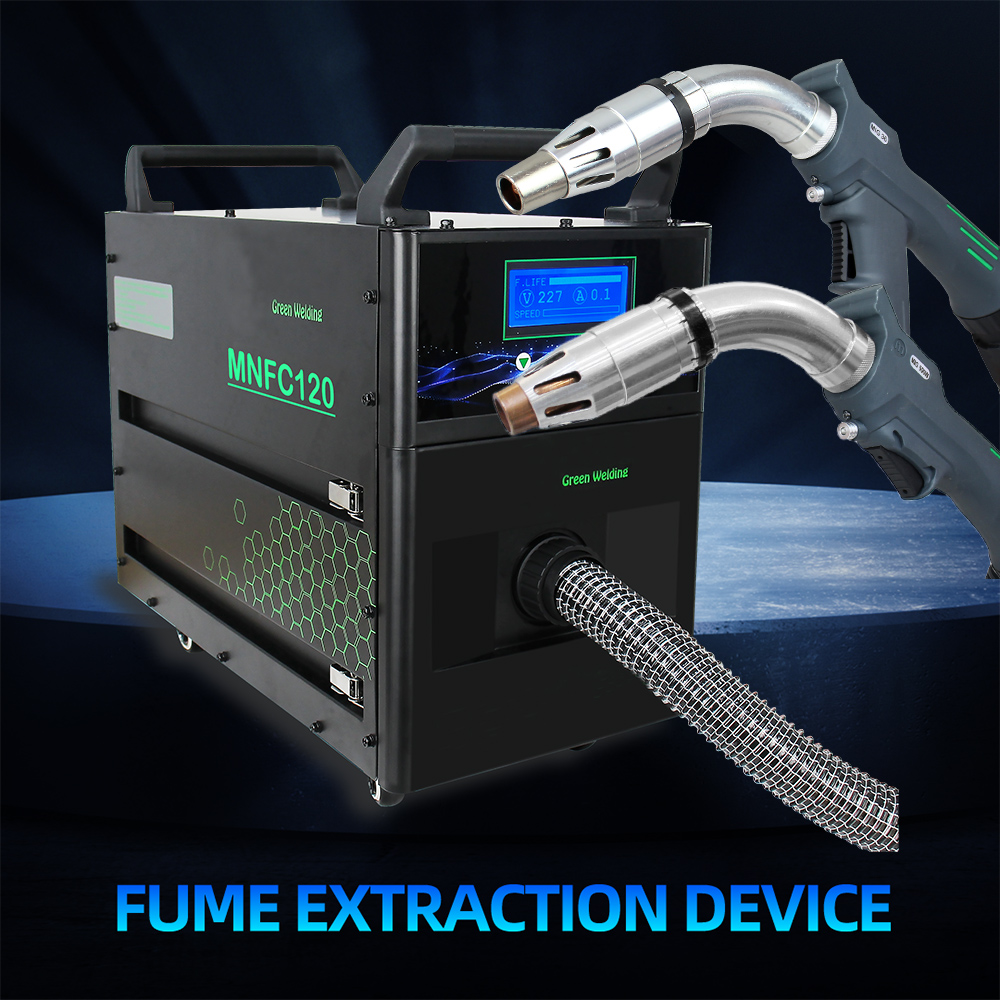The Invisible Threat: Understanding Welding Fumes
Welding is a fundamental process in countless industries, from automotive manufacturing and construction to shipbuilding and artistic metalwork. It’s a craft that builds, repairs, and connects, literally shaping our modern world. However, beneath the flash of the arc and the hiss of cooling metal lies an often-underestimated hazard: welding fumes. These airborne byproducts, composed of fine particulate matter and gases, are an invisible threat, silently impacting the health of welders and those in their vicinity.
The question, "Is it harmful to breathe in welding fumes?" isn't just rhetorical; it’s a critical inquiry that every person exposed to welding operations should ask. The unequivocal answer is yes, absolutely. Breathing in welding fumes can lead to a wide array of serious health problems, ranging from acute, short-term irritations to severe, chronic diseases that can affect nearly every organ system in the body. Understanding the composition of these fumes, the health risks they pose, and, most importantly, the effective strategies for protection is paramount for ensuring a safe working environment. This comprehensive guide will delve deep into the dangers of welding fumes, empowering you with the knowledge to protect yourself and your colleagues.
What Exactly Are Welding Fumes?
Welding fumes are a complex mixture of airborne contaminants generated during the welding process. When metal is heated to its melting point and filler materials are introduced, the intense heat causes a portion of the materials to vaporize. These metal vapors rapidly cool and condense into extremely fine solid particles, often less than 1 micrometer in diameter (PM1), which are easily inhalable deep into the lungs. Simultaneously, various gases are released or formed during the process.
The exact composition of welding fumes varies significantly depending on several factors:
Type of welding process: Different welding methods (e.g., MIG, TIG, Stick, Flux-Cored Arc Welding) produce varying amounts and types of fumes. For instance, Flux-Cored Arc Welding (FCAW) typically generates significantly more fumes than Gas Metal Arc Welding (GMAW or MIG).
Base metals being welded: The material being welded directly contributes to the fume composition. Welding stainless steel will produce chromium and nickel compounds, while welding mild steel yields iron oxides.
Filler metals used: The composition of the welding wire or rod adds its own set of elements to the fume.
Shielding gas: While shielding gases (like argon or CO2) protect the weld, they can also react with other elements or generate their own breakdown products.
Contaminants on the metal surface: Coatings, paints, primers, galvanizing, and even dirt or oil on the workpiece can decompose under welding heat, releasing highly toxic substances. For example, welding galvanized steel produces zinc oxide fumes, and welding over painted surfaces can release lead, cadmium, or other volatile organic compounds (VOCs).
Current, voltage, and arc length: Higher settings can lead to increased fume generation.
Common particulate components found in welding fumes include iron oxides, manganese, chromium, nickel, copper, zinc, lead, fluorides, and silicates. Gaseous byproducts often include ozone, carbon monoxide, carbon dioxide, nitrogen oxides (NOx), and hydrogen fluoride. Each of these components carries its own specific health risks, which can be amplified when inhaled in combination.
The Health Hazards: Acute and Chronic Effects
Exposure to welding fumes can result in a spectrum of health issues, from immediate, short-lived symptoms to severe, progressive, and potentially fatal diseases. The severity and type of health effect depend on several factors:
The specific chemicals in the fumes: Different metals and gases have different toxicities.
Concentration of the fumes: Higher concentrations mean greater exposure.
Duration of exposure: Short-term (acute) versus long-term (chronic) exposure.
Individual susceptibility: Factors like pre-existing conditions (e.g., asthma), smoking habits, and overall health play a role.
Acute (Short-Term) Health Effects
Acute effects typically occur immediately or soon after a single, high-level exposure. While often temporary, they can be debilitating and serve as a warning sign of inadequate ventilation or protection.
Metal Fume Fever: This is one of the most common acute effects, often experienced by welders working with galvanized steel or other zinc-coated materials. Symptoms resemble the flu: fever, chills, nausea, headache, muscle aches, and fatigue. These symptoms usually appear within a few hours of exposure and typically resolve within 24-48 hours. While generally not life-threatening, repeated bouts can weaken the immune system.
Irritation of Eyes, Nose, Throat, and Lungs: Many components of welding fumes, especially ozone, nitrogen oxides, and fine particulates, are potent irritants. This can lead to dry eyes, blurred vision, nasal congestion, sore throat, coughing, shortness of breath, and chest pain. This irritation can exacerbate existing respiratory conditions like asthma.
Asthma and Bronchitis: Acute exposure can trigger asthma attacks in susceptible individuals and contribute to acute bronchitis, characterized by inflammation of the bronchial tubes.
Dizziness and Nausea: Exposure to carbon monoxide or other gases, as well as general systemic effects from particulate inhalation, can cause these symptoms, potentially leading to impaired judgment and increased accident risk.
"Arc Eye" (Photokeratitis): While not directly caused by fumes, arc eye is a common acute injury from UV radiation produced by the welding arc, leading to severe eye pain, gritty sensation, light sensitivity, and temporary vision impairment. It's often experienced alongside fume exposure.
Chronic (Long-Term) Health Effects
Chronic effects develop over months or years of repeated exposure, often silently progressing until significant damage has occurred. These conditions can be debilitating, permanent, and life-threatening.
Respiratory Diseases:
Chronic Bronchitis: Persistent inflammation of the airways, leading to chronic cough and mucus production.
Pneumoconiosis (Welder's Lung): This is a group of interstitial lung diseases caused by the accumulation of inhaled dust in the lungs, leading to inflammation and fibrosis. Iron particles from welding fumes can lead to "siderosis," a benign form of pneumoconiosis, but often co-exists with other fibrotic lung diseases.
Emphysema and Chronic Obstructive Pulmonary Disease (COPD): Long-term exposure to irritants like welding fumes can accelerate the development of COPD, making breathing progressively difficult.
Pulmonary Fibrosis: Scarring of the lung tissue, leading to irreversible loss of lung function.
Asthma: Chronic exposure can lead to the development of occupational asthma or worsen pre-existing asthma.
Neurological Disorders: Manganese, a common component in welding fumes (especially when welding mild steel), is a neurotoxin. Chronic exposure to manganese can lead to a debilitating neurological condition known as Manganism, which mimics Parkinson's disease. Symptoms include tremors, gait disturbances, impaired balance, slowed movement (bradykinesia), and psychological changes. These effects are often irreversible.
Cancer: The International Agency for Research on Cancer (IARC), a part of the World Health Organization (WHO), classifies welding fumes as carcinogenic to humans (Group 1). This classification is based on sufficient evidence that welding fumes cause lung cancer and potentially kidney cancer. The specific carcinogens within the fumes include chromium (especially hexavalent chromium), nickel, arsenic, and cadmium, among others. Welders have an elevated risk of developing:
Lung Cancer: The most significant cancer risk.
Kidney Cancer: Emerging evidence suggests an increased risk.
Laryngeal and Urothelial Cancer: Some studies suggest potential links.
Kidney Damage: Exposure to heavy metals like cadmium and lead, which can be found in certain welding fumes, can cause kidney dysfunction and damage.
Cardiovascular Disease: Chronic inflammation and systemic effects from inhaled particulates can contribute to an increased risk of heart disease.
Skin and Eye Conditions: Long-term exposure to UV radiation from the arc, combined with irritant fumes, can lead to chronic eye irritation, cataracts, and skin conditions like dermatitis.
Reproductive Health Issues: Some studies suggest potential links between certain fume components and reproductive problems, though more research is needed.
Specific Hazards from Common Fume Components:
Chromium (especially Hexavalent Chromium - Cr(VI)): A highly toxic and potent human carcinogen, primarily found when welding stainless steel or chromium-plated metals. Causes lung cancer, nasal and sinus cancers, asthma, and skin irritation.
Nickel: Another carcinogen, also found when welding stainless steel. Linked to lung and nasal cancers, and skin allergies.
Manganese: Neurotoxic. Leads to Manganism (Parkinsonian symptoms).
Lead: Highly toxic, affects nervous system, kidneys, blood, and reproductive system. Found when welding lead-painted or lead-containing materials.
Zinc: Causes metal fume fever when welding galvanized steel.
Cadmium: Extremely toxic. Causes kidney damage, emphysema, and lung cancer. Found when welding cadmium-plated materials.
Fluorides: Found in flux-cored wires and some welding rods. Can cause irritation of eyes, nose, throat, and lead to bone damage (fluorosis) with chronic high exposure.
Silica: From grinding or working near concrete/masonry. Can cause silicosis.
Ozone (O3): Formed by UV radiation from the arc reacting with oxygen. Potent respiratory irritant, can cause lung damage even at low concentrations.
Nitrogen Oxides (NOx): Formed from the reaction of nitrogen and oxygen at high temperatures. Respiratory irritants, can cause pulmonary edema (fluid in the lungs).
Carbon Monoxide (CO): Formed from incomplete combustion or decomposition of coatings. Reduces oxygen-carrying capacity of blood, leading to dizziness, headaches, and in high concentrations, asphyxiation.
Carbon Dioxide (CO2): A simple asphyxiant in high concentrations. Can also cause headaches and dizziness.

Protecting Yourself: Essential Strategies for Fume Control
Given the extensive list of health risks, effective control of welding fumes is not merely recommended—it's absolutely essential. A multi-layered approach, often referred to as the "hierarchy of controls," is the most effective way to minimize exposure and ensure welder safety.
1. Elimination or Substitution (Most Effective)
The best way to control a hazard is to eliminate it entirely or substitute it with a less hazardous alternative. While eliminating welding entirely isn't practical for many industries, substitution often is.
Automated Processes: Can automation (e.g., robotic welding) reduce human exposure?
Alternative Joining Methods: Can bolting, riveting, or adhesives be used instead of welding?
Less Hazardous Materials: Can a less toxic filler metal or base metal be used? For example, using low-manganese welding rods or avoiding welding on galvanized or painted surfaces.
Clean Surfaces: Ensure the base metal is clean and free of coatings, paint, rust, oil, or grease before welding. This significantly reduces harmful byproducts.
2. Engineering Controls (Highly Effective)
Engineering controls aim to remove or reduce the hazard at its source, protecting everyone in the vicinity without relying on individual worker action. These are typically the most effective and preferred methods.
Local Exhaust Ventilation (LEV) / Fume Extraction Systems: These systems are designed to capture fumes as close to the source as possible, preventing them from spreading into the breathing zone and the general workspace.
Fume Extraction Guns: These are welding torches with integrated fume extraction nozzles that suck fumes away right at the arc. They are highly effective as they capture fumes directly at the source.
Fume Extractors (Portable or Centralized): These units use flexible hoses and capture nozzles (often magnetic) that can be positioned near the welding arc. They draw fumes through filters (HEPA and/or activated carbon) and return clean air. Portable units offer flexibility, while centralized systems serve multiple workstations.
Downdraft Tables: Work surfaces with integrated ventilation that pulls fumes downwards and away from the welder's breathing zone.
General Ventilation: While less effective than LEV for point-source capture, good general ventilation (e.g., large exhaust fans, open doors/windows in appropriate settings) helps dilute and remove residual fumes from the overall work area. It should always be used in conjunction with LEV, not as a standalone solution for welding.
Enclosures/Isolation: In some cases, welding can be done within enclosed booths or by robotic welders in isolated areas, preventing fume release into the general workspace.
3. Administrative Controls (Good Supplement)
Administrative controls involve changes in work practices or procedures to reduce exposure.
Work Practice Changes:
Positioning: Welders should position themselves to avoid inhaling fumes, keeping their head out of the plume. Working upwind (if there's a natural draft) or perpendicular to the fume plume can help.
Welding Parameters: Adjusting welding parameters (e.g., lower voltage, shorter arc length) can sometimes reduce fume generation, though this must be balanced with weld quality.
Confined Spaces: Implement strict confined space entry procedures, including continuous monitoring of air quality, forced ventilation, and a standby person.
Training and Education: All workers involved in or around welding must be thoroughly trained on the hazards of welding fumes, proper use of ventilation equipment, and correct PPE.
Maintenance: Regular maintenance and inspection of ventilation systems and PPE are crucial to ensure they remain effective. Filters in fume extractors must be changed regularly.
Warning Signs: Post clear warning signs in welding areas to alert workers and visitors to fume hazards.
4. Personal Protective Equipment (PPE) (Least Effective as Primary Control)
PPE is the last line of defense and should only be used after engineering and administrative controls have been implemented to their fullest extent. PPE protects the individual worker but does not remove the hazard from the environment.
Respiratory Protection:
Powered Air-Purifying Respirators (PAPRs): These are highly recommended for welders. They consist of a battery-powered fan that draws air through a filter, providing positive pressure to a hood or mask. PAPRs offer excellent protection against particulates and often gases, are comfortable for extended use, and reduce breathing resistance.
Air-Purifying Respirators (APRs): These include half-mask or full-face respirators with specific particulate (P100/HEPA) and/or gas cartridges. They require a tight face seal and proper fit-testing to be effective. They can be uncomfortable and cause breathing resistance over long periods.
Supplied-Air Respirators (SARs): Used in highly hazardous or oxygen-deficient environments (e.g., confined spaces). These respirators provide a continuous flow of clean air from an external source.
Welding Helmets with Integrated Respirators: Many modern welding helmets come with built-in PAPR systems, offering combined eye/face protection and respiratory protection.
Other PPE: While not directly for fumes, other PPE like welding gloves, flame-resistant clothing, and safety glasses are essential for overall welding safety.
The Importance of Regular Health Monitoring
Even with robust control measures, regular health monitoring is vital for welders, especially those with long-term exposure.
Pre-placement and Periodic Medical Examinations: These can help identify any pre-existing conditions that might be exacerbated by welding fumes and monitor for early signs of occupational diseases (e.g., lung function tests).
Biological Monitoring: In some cases, biological monitoring (e.g., blood or urine tests) can assess exposure to specific heavy metals like manganese or chromium.
The Legal and Ethical Imperative
Beyond the immediate health concerns, addressing welding fume exposure also carries significant legal and ethical implications for employers. Occupational safety and health regulations worldwide mandate employers to provide a safe working environment, which explicitly includes controlling airborne contaminants like welding fumes. Failure to comply can result in substantial fines, legal action, and a damaged reputation.
Furthermore, there is a clear ethical imperative. Employers have a moral responsibility to protect the well-being of their workforce. Investing in effective fume control solutions is not just a cost; it's an investment in human health, worker morale, productivity, and the long-term sustainability of the business. Companies that prioritize worker safety often experience reduced absenteeism, lower healthcare costs, improved employee retention, and a more positive work culture.
A Shared Responsibility
While employers bear the primary responsibility for providing a safe workplace, safety is ultimately a shared responsibility. Welders themselves play a crucial role in their own protection:
Follow Procedures: Adhere to all safety guidelines and operating procedures for welding and fume control equipment.
Use PPE Correctly: Always wear and properly maintain assigned personal protective equipment.
Report Concerns: Immediately report any malfunctioning ventilation systems, damaged PPE, or symptoms of fume exposure to supervisors.
Stay Informed: Continuously educate themselves on welding hazards and best safety practices.
Conclusion: Don't Hold Your Breath – Take Action
Is it harmful to breathe in welding fumes? The answer, supported by extensive scientific research and countless occupational health cases, is an resounding YES. Welding fumes are a complex cocktail of toxic particulates and gases that can cause a wide spectrum of acute and chronic health devastating conditions, from irritating metal fume fever to debilitating neurological disorders and life-threatening cancers.
However, the good news is that these risks are largely preventable. By implementing a comprehensive hierarchy of controls—prioritizing elimination and engineering solutions like local exhaust ventilation, supplementing with administrative controls, and providing appropriate personal protective equipment—the hazards of welding fume exposure can be effectively managed.
Ignoring the risks is not an option. For welders, their colleagues, and the companies they work for, understanding the dangers and proactively implementing robust safety measures is not just good practice; it's essential for health, productivity, and compliance. Don't hold your breath when it comes to welding fume safety. Take action today to ensure a safer tomorrow.

English
简体中文
العربية
Français
Русский
Español
Português
Deutsch
italiano
日本語
한국어
Nederlands
Tiếng Việt
ไทย
Polski
Türkçe
ភាសាខ្មែរ
Bahasa Melayu
Filipino
Bahasa Indonesia
magyar
Română
Čeština
Монгол
қазақ
Српски
हिन्दी
فارسی
Slovenčina
Slovenščina
Norsk
Svenska
українська
Ελληνικά
Suomi
Latine
Dansk
বাংলা
Hrvatski
Afrikaans
Gaeilge
Eesti keel
नेपाली
Oʻzbekcha
latviešu
Azərbaycan dili
Беларуская мова
Bosanski
Български
ქართული
Lietuvių















